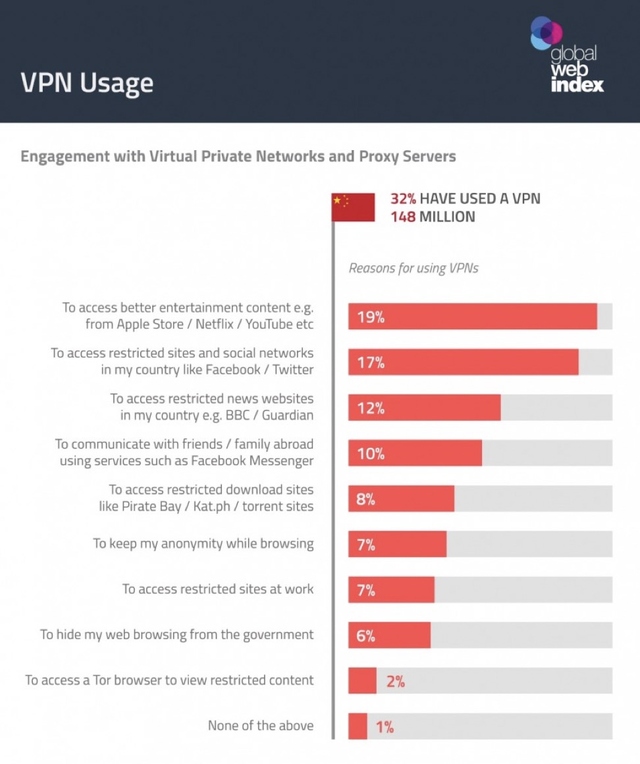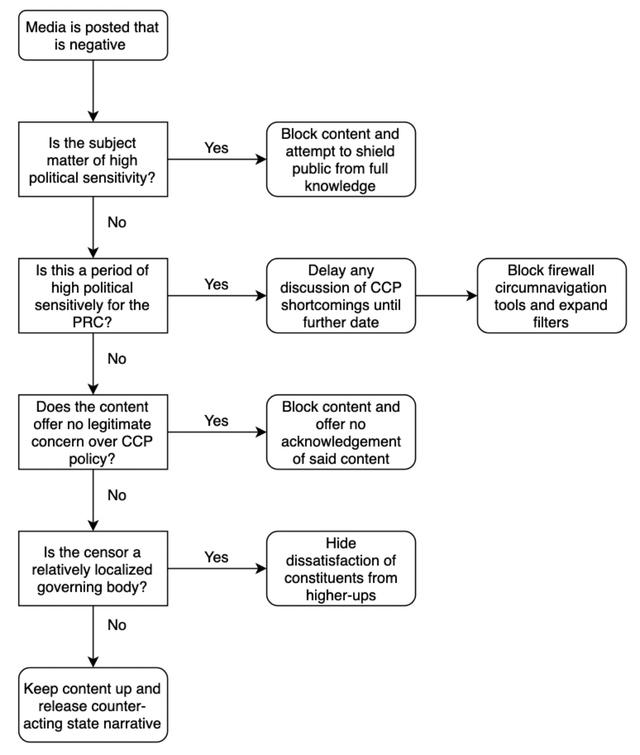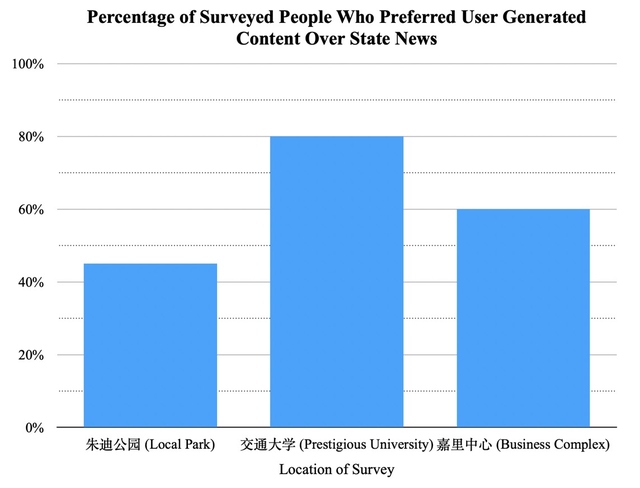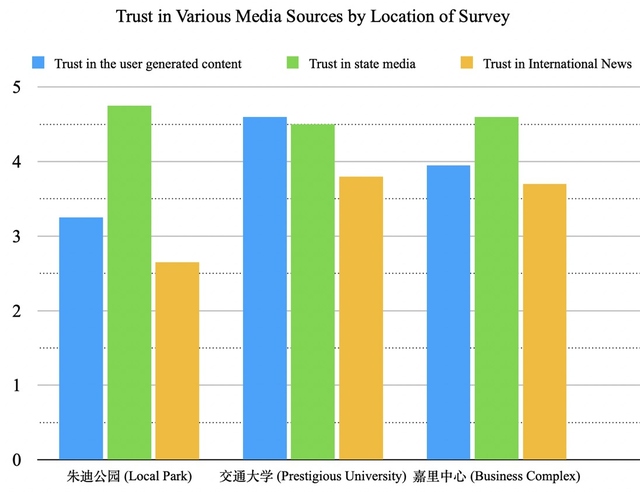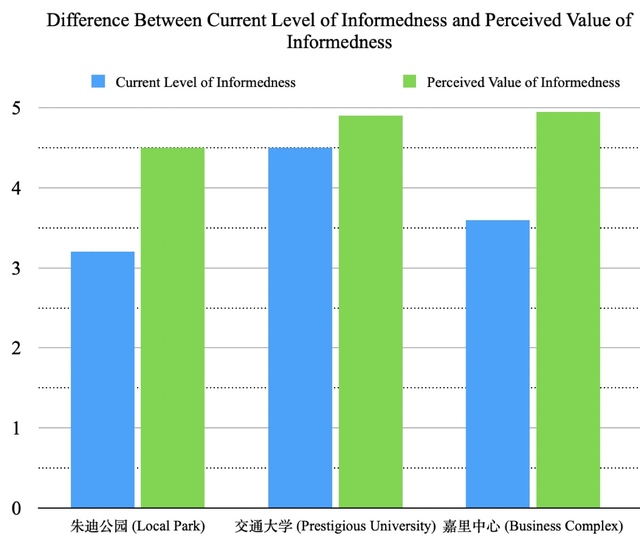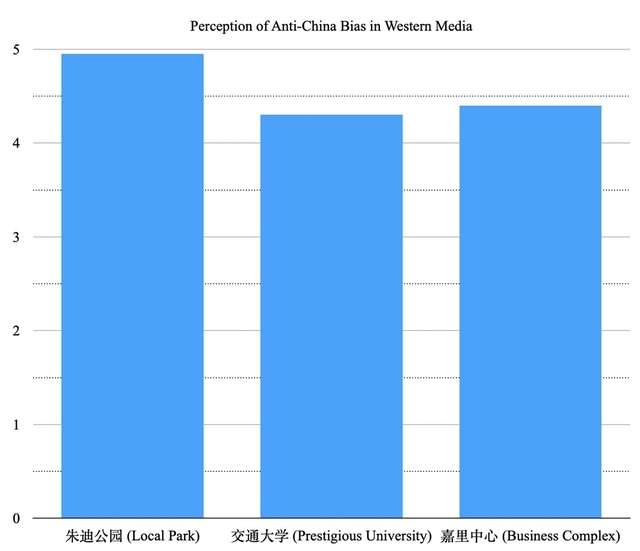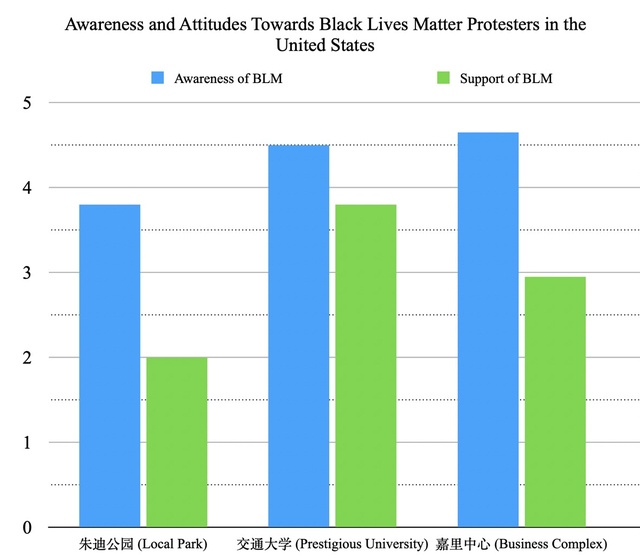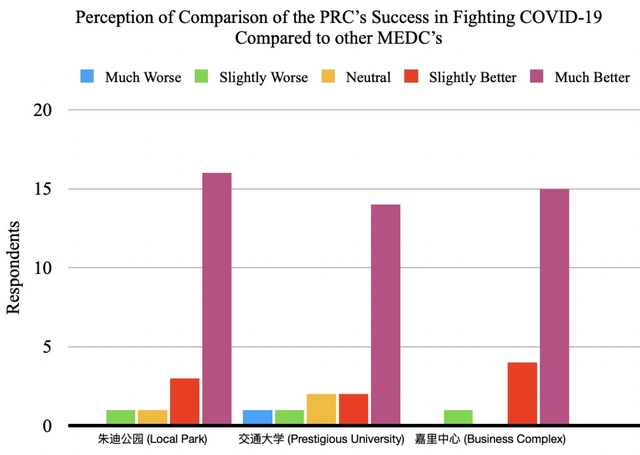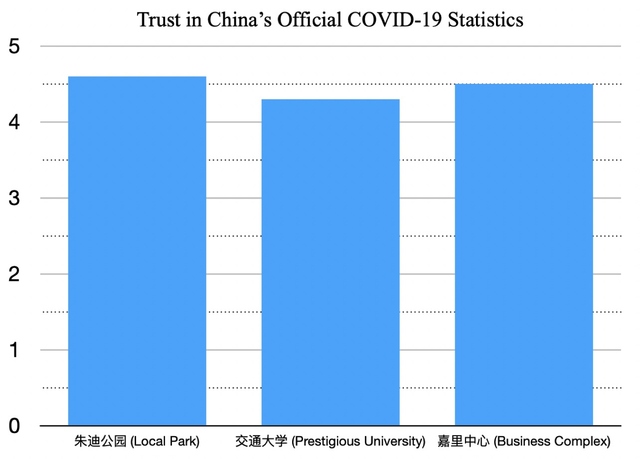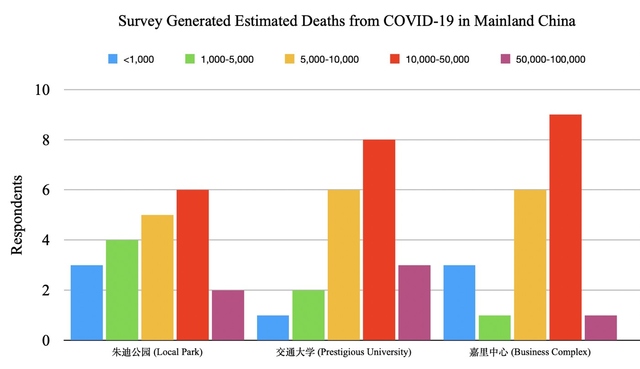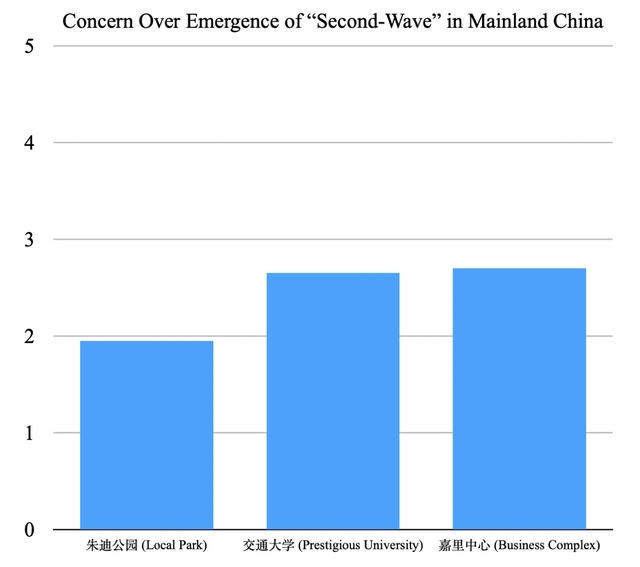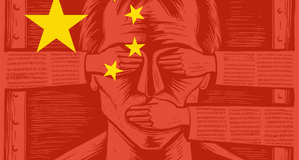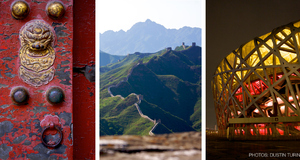From Inquiries Journal: Special Editions VOL. 2020 NO. 1Trust in State Media: Analyzing the Chinese Communist Party's Changing Approach to Public Opinion and Media Censorship
By
Inquiries Journal: Special Editions 2020, Vol. 2020 No. 1 | pg. 1/1
IN THIS ARTICLE
KEYWORDS
AbstractChina’s rise as a global power has major implications for the future of free speech and media censorship both within and outside the People’s Republic. While there are numerous examples of the Chinese Communist Party employing blanket bans on accessing information, it also often frequently permits the presence of media unfavorable to the party due to the current state strategy of “public opinion guidance” that utilizes centrally commanded counter-narratives that delegitimize or undermine dissenters (Tai). I evaluated this approach and determined that it is crucial in fostering sufficient trust between the Chinese people and state propaganda apparatus, directly protecting the party’s stability and the population’s support of the administration. This implies that media blackouts will increasingly become less integral to Beijing’s informational management strategy. I. IntroductionAs likely the most influential autocracy in the world, The People’s Republic of China’s (PRC) very existence challenges the conception of politics forwarded by political scientists such as Francis Fukuyama who posited that liberal democracies exist as the end-point of ideological evolution. The success of the Chinese Communist Party’s - CCP - central command along with its resistance to resistance has been molded in no small part by the government’s heavy control of the media. Many are familiar with “The Great Firewall of China” that blocks access to a plethora of Western media sources to the vast majority of locals; recent news stories surrounding China’s soft influence on institutions such as the NBA and Riot Games who were punished or discouraged from offering support to the Hong Kong protesters show the increasing urgency of a discussion surrounding China’s attitude towards free speech (Osnos). The PRC’s emphasize on censorship since General Secretary Xi Jinping came into power in 2012 has earned it the lowest possible freedom of press ranking by Freedom House, Reporters Without Borders, and OpenNet (RSF). However, in an information era where the sheer volume and speed of online media make it nearly impossible to completely stem the flow of information, state organs within the CCP tasked with censorship and propaganda - such as the Bureau of Public Information and Network Security Supervision - have had to employ increasingly nuanced strategies that target specific goals of the party. II. OutlineGiven the structural barriers to gathering data from locals within China, this essay will attempt to offer empirical data to evaluate the efficacy of the Chinese government in controlling public opinion within local Chinese communities. It will also attempt to characterize the actualization of state-specified censorship policies on daily life by illustrating the media habits of Chinese nationals and residents.` The research’s findings point to the conclusion that regardless of the specific mediums of information the survey sample regularly accessed, respondents consistently regarded state media as credible - especially when compared to international news outlets. There also appeared to be a correlation wherein respondents with comparatively higher degrees of faith in official CCP news sources perceived China more favorably in a range of social, political, and economic issues. In terms of the media habits of respondents, there was a clear disparity between the breadth of news sources between those working in the service and manufacturing industry when compared to those working in the finance industry or currently enrolled in higher education. The specific methodology of data gathering was all conducted through first-hand surveys of willing respondents. The sample consisted of 60 participants equally taken from four different geographic locations: a park (朱迪公园), a highly ranked university (交通大学), a corporate office (嘉里中心). The control of public opinion as defined in this essay does not necessarily pertain to the risk of collectivization, given the fact that there are other factors of deterrence that the CCP employs to curb protests and democracy movements. Instead, this paper focuses on the general perception of people towards the CCP’s performance and the credibility of its state media bodies that are quantified directly through targeted questions and indirectly through indicators of the performance of CCP leadership. The practical application of these findings is threefold. Firstly, it assists in properly diagnosing the legitimate threat that China poses on the international standard of freedom of speech by assessing her primary objectives of censorship. Secondly, it offers an explanation as to the perceived silence of the Chinese population in relation to their country’s accused instances of human rights violations. Thirdly, it offers an evaluation and analysis of advanced media manipulation methods that subsequent autocracies may follow suit in. III. BackgroundPreceding Deng Xiaoping’s reform and opening in 1978, state media propaganda as the “throat and tongue” of the party, acting as the lone institution disseminating information within China.The People’s Daily has acted as the leading authority concerning the CCP’s plans and policies since its conception in 1948, a role that was especially important during the Cultural Revolution as there were few sources of information allowed to cover Chinese issues. Following reforms, the CCP permitted magazines, TV, and radio to operate separate - though under strict supervision - from the Chinese government (Tai). While China still maintains practices of heavy censorship, its most recent struggles pertaining to the press include managing public opinion on taboo issues such as separatist movements and human rights abuses in addition to controlling microblogs on social media apps and online circumvention tools such as VPN’s. The motive of these practices as described by General Secretary Xi is to ensure that media in China “reflectthe party’s will, safeguard the party’s authority, and safeguard the party’s unity” (Associated Press). These goals have been approached with an overarching strategy that has trended towards “conditional public opinion guidance” rather than pre-emptive restrictions and bans (Tai). The CCP recognizes the struggle associated with stopping the flow of information before it gets to its citizens and therefore opts to guide media rather than assume it can consistently block it. The major threats towards traditional methods of media black-out such as filters and firewalls are being threatened by three forces that have arisen in an era of mass mobile communication networks and wide-spread access to social media. Firstly, alternate sources such as citizen journalism often propagate on popularly used platforms such as WeChat, QQ, and Weibo. While these social media companies are completely compliant with the CCP, they often lack the capacity to be able to file through the vast amount of content before problematic information has already spread between communities. Secondly, technological workarounds such as VPN’s, proxy services, or mirror websites that allow access to blocked sites. An estimated 32% of Chinese internet users, totaling 148 million webizens, have used a Virtual Private Network - VPN - that allows access to foreign media such as YouTube, Facebook, and Wikipedia. Figure 1 shows the various reasons Chinese residents have cited for turning to VPNs (Manders) Thirdly, individual acts of circumvention such as using euphemisms or analogies to avoid word filters. The #metoo movement, for example, was spread through China with the phrase “rice bunny” (米兔 or mi tu) after the cause was deemed politically inappropriate (Yang). The response by the CCP has largely been characterized as “dredging and blocking” (shudu jiehe) which focuses on a combination of undoing potential damage of dissent and quelling it at the source. Recently, the CCP has focused on releasing state-sponsored counter-narratives that focus on persuasion rather than restriction - incorporating informal news into propaganda and reporting on negative news within a context controlled by the CCP (Tai). This shift is intended to embolden central legitimacy by increasing the public’s trust in China’s media apparatus and benefits the CCP in that it allows the leadership to gauge the sensitivity of certain reports. The reception of people’s consumption of damaging media is a form of feedback that allows the party to make necessary changes and prioritize the curtailing of specific issues being reported. Furthermore, the softer hand assists in the management of a large and fragmented country by providing data points of public opinion at the local level. Pragmatically, dredging and blocking offers a much more realistic solution to the PRC’s goals of inundating its people with state-sanctioned narratives. The country reached 1.6 billion mobile phone subscriptions as of June 2020, and estimates place the number of WeChat articles posted daily at around 2 million. A digital landscape decentralized to this degree is incredibly costly to thoroughly vet, shown by the fact that China’s Golden Shield Project - one the CCP’s largest scale censorship plans - employs roughly 50,000 security officers (Anderson). However, the usage of this particular strategy differs depending on the overseeing censorship authorities, the political context in China, and the type of media. In terms of the relevant actor tasked with controlling the media, provisional avnd local governments are more likely to ban news rather than guide public opinion. This is likely due to the incentives of local leaders to seek praise and promotions from the central government, which is contrasted by the central government’s interests in inspecting the performance of subordinate authorities. In terms of the political context, state crackdowns on VPN’s and citizen journalism happen most frequently during periods of political sensitivity. In 2017 during Xi’s transition to his second term as president, for example, “China’s Ministry of Industry and Information Technology said… that all unauthorized virtual private networks will be banned as the ministry rolls out a 14-month campaign to “clean up” and “regulate” internet connection services” (Leng). Similar measures are employed during national holidays such as October 1st or important dates such as June 4th. In terms of the nature of the content itself, information surrounding fleeting topics or media designed to humorously ridicule Chinese leadership tends to be banned rather than guided due to the lack of necessity of a legitimate party response when compared to more persistent issues of the Chinese state. There is little to no need to carefully address internet trends such as the depiction of Xi Jinping as Winnie the Pooh given that the intent behind the created content is not to create a constructive dialogue. On the other end of the spectrum, mentions of topics of extreme political sensitivity are more likely to be banned rather than guided as the party must weigh the likelihood of a revolt to the marginal increase in trust gained if the information is released (Haas). This is consistent with research conducted by academics such as King et al. who concluded the Chinese government did not purely take down content that criticized the government, but rather utilized censorship when information had a high risk of inflaming resistance towards the state. Cases of blanket censorship are relatively easily identifiable and straight forward when conducted by the CCP. The most noteworthy of these is the region of Xinjiang, a Western Chinese province home to roughly 10 million Muslim Turkic-speaking Uyghurs. An estimated 1 million Uyghurs have been detained in Chines re-education camps intended to reform Uyghurs. The CCP has used digital tools such as facial recognition systems, routine social media checks combined with physical surveillance to monitor and detain Uyghurs (Cockerell). Its usage of technological tools to forward the suppression of Uyghur separatist efforts has also extended to removing mentions of oppression in journalism and academia. One particular scholar Timothy Grace was asked to remove contextualization of re-education camps by his editor in chief Han Xiaorong at the HK Polytechnic University (Panda). Other Chinese projects that rely heavily on public relations have also been subject to more scrutiny in terms of hard censorship. After the Belt and Road Initiative (BRI) was met by domestic critics who claimed that Xi was engaging in dasabior “throwing money around,” the phrase has been censored on any media platforms. The coverage of examples of failed projects such as the canceled construction of a Sierra-Leone airport are also banned from being reported on (Schrader). It is worth noting, however, the degree of precision that the CCP has taken in order to craft the global perception of BRI. State officials retreated from previous propaganda campaigns that publicized China as a menacing threat by scrapping established slogans such as the ‘Made in China 2025’ plan that sought to expand China’s high-tech industry. The goal behind the shift in rhetoric was to paint the PRC as a moderate trading partner instead of an expansionist superpower reminiscent of past imperial powers.16 For issues of political concern that rely heavily on public relations such as BRI, censorship is often followed with supplementary official statements that craft favorable narratives for the party. Figure 2 below shows a summary of the appropriate tools of censorship the CCP employs depending on the type of content and the censor in question. III. Research ResultsIn order to more accurately observe the relationship between a respondent’s background (socio-economic conditions, age, exposure to Western media, e.t.c.) and their perception of China, the majority of results will be organized by the location of the interview. The first location, referred to as ‘local park’, is located on the outskirts of Shanghai in a relatively underdeveloped area. Surveys indicated that 85% of respondents worked in either the service industry (e.g delivery driver or maid) or low-level corporate jobs (e.g secretary or telemarketer). The second location, referred to as ‘prestigious university’, is located near downtown Shanghai and is currently the 3rd highest-ranked university in China. 100% of respondents were students and between the ages of 18-24. The third location, referred to as ‘business complex’, is located in downtown Shanghai and is widely considered one of the most developed areas of the city. 75% of respondents worked in either the finance industry or upper-level corporate jobs. Also, note that a number of more sensitive questions only gathered responses from a few respondents as many refused to answer or stated that they did not know how to answer. 66% of the omitted data points came from participants from the local park location. Figure 3. “Between state news and citizen journalism, who is your preferred provider of information?” Figure 4. “On a scale of 1-5 (1 being not at all, 5 being completely), please indicate how much you trust these various news sources” Figure 5. Graph is a comparison between two questions which were, “On a scale from 1-5, how informed do you think you are regarding the news?,” and, “On a scale from 1-5, how important is being informed of current events to you?” Figure 6. “On a scale from 1-5 (1 being not at all, 5 being completely), how much do you agree with this statement: Western journalism has an agenda to portray China negatively” Figure 7. Graph visualizes the answer to two questions which were, “On a scale from 1-5, how familiar are you concerning the Black Lives Matter protests in America?,” and, “On a scale from 1-5, How positively do you view the Black Lives Matter protesters in America?” Figure 8. “How would you compare China's handling of the COVID-19 pandemic in relation to other more economically developed countries? Figure 9. “On a scale from 1-5 (1 being not at all, 5 being completely), how much do you trust China's reporting of their COVID-19 statistics?” Figure 10. “Please estimate (without checking) how many people have died of COVID-19 in Mainland China” Figure 11. “On a scale from 1-5 (1 being not at all, 5 being very much so), how worried are you concerning a second-wave of COVID-19 in China?” Note that not a single respondent answered that they trust state media below a 3 on a scale between 1-5, a phenomenon that did not occur for any of the other distributors of news. Furthermore, within the category of state media, 80% of the 40 respondents who were asked which state publication was the most reputable chose The People’s Daily. Note that not a single respondent gave a lower answer to the latter question than they gave to the former question. Note that not a single respondent answered that they agree with the statement below a 4 on a scale between 1-5. Note that for the data collected from the local park, only 5 respondents were willing to or able to answer. All 20 respondents from the prestigious university and business complex location did respond. Figures 8-11 all concern the public perception of China’s involvement in and performance concerning the COVID-19 pandemic. At the time of the surveys, according to the Chinese Center for Disease Control and Prevention and the WHO, ~84,000 people within mainland China had been infected with COVID-19 and ~4,600 had died.17 Note that when a location has no bar of a certain color, no participant responded with that answer choice. Note that these surveys were gathered before the brief uptick in Beijing cases in late July. In addition to surveys, an interview was also conducted with a Hong Kong based journalist who writes for a major news publication in Asia. Information from the interview will be used in the findings portion of this paper while protecting the anonymity of the journalist. IV. ConclusionThe first portion of the research results demonstrates the finding that regardless of the respondent’s media habits, those surveyed had similarly high levels of trust in state media. The largest disparity between the answers of two locations was present in Figure 3 where almost twice as many university students consumed user-generated content - e.g. citizenship journalling, blog posts - when compared to respondents found at the local park (80% and 45% respectively). Because of the fact that digital platforms and unauthorized information sources are likelier to host content critical of the CCP, it stands to reason that those who spend disproportionately more time on these outlets would harbor more negative views of the Chinese state, and by proxy its media wing. The data gathered, however, shows that between the three survey locations, the range of the average level of trust in CCP state media between all three groups is between 4.50 and 4.75. Despite the perception of state media remaining relatively constant over the three samples, Figure 4 displays that the relative trust in digital media and international news did vary to a noticeable degree - namely that university students and respondents found in the business complex on average trusted user-generated content and international news more. While it is to be expected that those working in the finance industry or academia would need to rely upon international news or grassroots reporting to engage with the global markets and access resources only available to foreigners, the evidence shows that there is little to no trade-off between trusting alternate media sources and state propaganda. This is a testament to the efficacy of the CCP’s propaganda apparatus recognizing the pull and power of decentralized information and incorporating it into their official statements. While in the past it may have been impossible to trust in both digital news and The People’s Daily given contradicting information, the two sources of information are no longer decisively mutually exclusive. In terms of the motives of Chinese citizens to be informed on current events, in Figure 5, every single participant essentially claimed that they think they should be reading more news through expressing that they see reading the news as more important than what their current relationship with the news entails. Despite a visible perception that the Chinese people are “content with ignorance,” the survey shows that the average respondent places incredibly high value on informedness. This trend is likely to increase as the average life quality in China improves and people are able to direct more attention to current events. This context illuminates the decision making of the CCP in noticing this as a formative period in defining the trustworthy media institutions for an evolving Chinese public. Moreover, as readers are placing a higher emphasis on informedness, they are becoming more aware of and disdainful towards the more outlandish acts of Chinese censorship. The leadership of the party recognizes this and thus pivots to establishes a symbiotic relationship with online micro-blogging. However, while that may explain why the CCP tolerates user-generated content, it does not account for the prevalence of international news as a source of information for college students and upper-class workers. Figure 4 and Figure 6 seem contradictory as the former shows that respondents from locations 1 and 2 have a reasonable trust in international news overall (>3.5 on a scale from 1-5) while the latter shows that respondents from all locations agree that Western media has an incentive to slander China (>4.0 on a scale from 1-5). The discrepancy is once again a product of CCP public opinion guidance. The implicit tension with Chinese residents consuming foreign content is that access to licensed VPNs is essential for highly developed industries that rely on Western sources while Beijing is unable to assert any control of the content being created outside its jurisdiction. The fact that participants both trusted international news in general yet doubted its coverage on Chinese issues demonstrates that China has segmented the perceived credibility of information being imported to the mainland. This reaches the goal of allowing necessary outside information while preemptively discrediting information critical of the PRC. Figures 7-11 all map how China’s manipulation of the informational diet of its citizens translates to tangible differences in public opinion regarding numerous hot button issues. The Black Lives Matter example illustrated in Figure 7 displays how respondents felt about both the value of movements centered around racial liberation and wide-spread protests of the government. The selection of BLM rather than movements within China was largely due to the fact that respondents had virtually no interactions or first-hand accounts of these protests, meaning their understanding of the issue stems entirely from the media. Furthermore, the BLM protests are far removed from Chinese residents with no stake in the outcome as well as not as politically sensitive as local democracy demonstrations, allowing respondents to answer more truthfully and objectively. The data show that on average, those surveyed were aware of BLM but regarded the protesters in a negative light (with the exception of university students being the only group to perceive the protesters on average as slightly positive). The awareness of the issue once again exemplifies the shift in Chinese strategies to not completely black-out public knowledge of overseas protests, an action that would have previously been instinctive as protests are seen as inspiring similar movements abroad. In fact, China has taken the opposite approach. The US consulate was invited to give a lecture on BLM in Guangzhou but was met with the backlash of Chinese netizens who perceived the talk as attempting to “incite Africans in Guangzhou to a color revolution.”18 As a side note from the author, my mother will often share WeChat articles in the family group chat detailing anecdotes of African Americans committing crimes, assaulting white women, and looting stores. The backlash of Chinese readers who consume warped depictions of the BLM movement has created a more emphatic rejection of protests and minority resistance than blocking content. Lastly on the COVID-19 pandemic, Figures 8-11 all discuss the performance of the Chinese leadership in fighting the disease domestically. The first thing to note is how decisively optimistic the survey sample was. In Figure 8, over three-fourths of all respondents believed that the PRC has had ‘much better’ success in fighting coronavirus when compared to other more economically developed countries. In Figure 9, no location had a trust in China’s official COVID-19 statistics that was less than 4 on a scale from 1-5. In Figure 10 more than half of all respondents underestimated the total number of deaths caused by the coronavirus within China, while only 10% of respondents overestimated this number. The fact that over 60% of respondents were inaccurate in their estimate may indicate that the widespread approval of the CCP’s strategies against COVID-19 do not stem from facts and figures, but rather a ‘gut-feeling’. In Figure 11 no location actively worried about a second wave arising in China as all averages were below the neutral option of 3 on a scale from 1-5. Whether this optimism stems from a legitimate success by the CCP, an inability for humans to conceptualize large scale events, or narratives from the media, the conclusion is that COVID-19 is not a hot button issue threatening the legitimacy of the ruling party of China at the moment. The data does show that those working in the business complex were more likely than university students who were more likely than respondents from the local park to know the true death toll. There might be implication then, that as the educational background and working experience of a group grows and citizens become more aware of the actual situation, the ability for Chinese propaganda officers to bend the truth diminishes. The last consideration of opinion guidance not illustrated through data collection is that of the changing dynamics of journalism within and around China. An interview with the aforementioned anonymous journalist shed light on the increasing prevalence of self-censorship within journalistic communities who feel soft pressure from Chinese officials. They make comments that the chilling effect has been perpetuated by “the absolute power of the mainland” that carries huge sums of money and the world’s largest population. However, the interviewee notes that they do not believe that this is an intentional policy decision by the CCP, but rather an organic trend that originates from individual journalists feeling the need to “kaotao” and editors who are increasingly strict in their process of vetting articles to avoid confrontations with China. Findings made in this paper point to three large takeaways. The first is that the notion that the best method of liberalizing China politically is to increase the public’s exposure to outside information is largely premised off of the false assumption that the CCP does not know how to spin unfavorable media through their own processes of informational release. The second is that while the most noticeable threats to free speech that Beijing poses may be in the censorship of foreign actors, it would be beneficial to consider the more nuanced and hidden tactics the CCP employs to discredit dissenters. The thirds is that the PRC will likely not be the last autocracy with an incentive to control the public opinion. If democracies are to better understand the thought calculus of various despots and dictators, they must first look to how the most experienced example has maintained their rule. ReferencesAnderson, Daniel. “Splinternet Behind the Great Firewall of China.”ACMqueue, vol. 10, no. 11, 2012, queue.acm.org/detail.cfm?id=2405036. Associated Press. “Xi Jinping Asks for ‘absolute Loyalty’ from Chinese State Media.”The Guardian, 29 Nov. 2017, www.theguardian.com/world/2016/feb/19/xi-jinping-tours-chinas- top-state-media-outlets-to-boost-loyalty. “China Coronavirus Statistics.”Worldometer, July 2020, www.worldometers.info/coronavirus/ country/china. Cockerell, Isobel. “Inside China’s Surveillance Crackdown on Uyghurs.”Wired, 14 May 2020, www.wired.com/story/inside-chinas-massive-surveillance-operation. Haas, Benjamin. “China Bans Winnie the Pooh Film after Comparisons to President Xi.”The Guardian, 7 Aug. 2018, www.theguardian.com/world/2018/aug/07/china-bans-winnie-the- pooh-film-to-stop-comparisons-to-president-xi. Leng, Sidney. “The Who, What and Why in China’s Latest VPN Crackdown.”South China Morning Post, 26 Jan. 2017, www.scmp.com/news/china/policies-politics/article/2065432/who-what- and-why-chinas-latest-vpn-crackdown. KING, GARY, et al. “How Censorship in China Allows Government Criticism but Silences Colletive Expression.”American Political Science Review, vol. 107, no. 2, 2013, pp. 326– 43.Crossref, doi:10.1017/s0003055413000014. Mander, Jason. “90 Million VPN Users in China Have Accessed Restricted Social Networks.”GWI, 6 Jan. 2017, blog.globalwebindex.com/chart-of-the-day/90-million-vpn-users-in-china-have- accessed-restricted-social-networks. Osnos, Evan. “Media Censorship in China.”Council on Foreign Relations, 17 Feb. 2017, www.cfr.org/backgrounder/media-censorship-china. Panda, Damodar. “Xinjiang and Central Asia: China's Problems and Policy Implications.”Indian Journal of Asian Affairs, vol. 19, no. 2, 2006, pp. 29–44.JSTOR, www.jstor.org/stable/ 41950474. Schrader, Matt. “Domestic Criticism May Signal Shrunken Belt and Road Ambitions.”Jamestown, 10 Aug. 2018, jamestown.org/program/domestic-criticism-may-signal-china-scaling-back- its-bri-ambitions. Tai, Qiuqing. “China's Media Censorship: A Dynamic and Diversified Regime.”Journal of East Asian Studies, vol. 14, no. 2, 2014, pp. 185–209. “World Press Freedom Index, Reporters without Borders.”RSF, 2020, rsf.org/en/ranking. Yang, Yuan. “China’s ‘MeToo’ Movement Evades Censors with #RiceBunny.”Financial Times, 9 Aug. 2018, www.ft.com/content/61903744-9540-11e8-b67b-b8205561c3fe. Suggested Reading from Inquiries Journal
Inquiries Journal provides undergraduate and graduate students around the world a platform for the wide dissemination of academic work over a range of core disciplines. Representing the work of students from hundreds of institutions around the globe, Inquiries Journal's large database of academic articles is completely free. Learn more | Blog | Submit Latest in Political Science |

